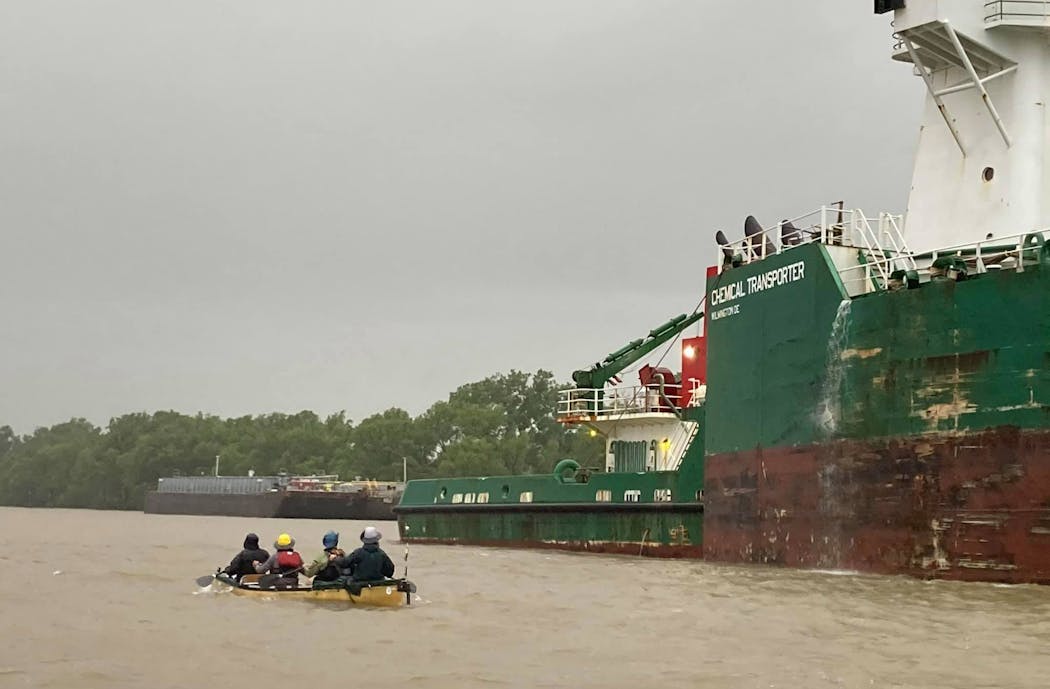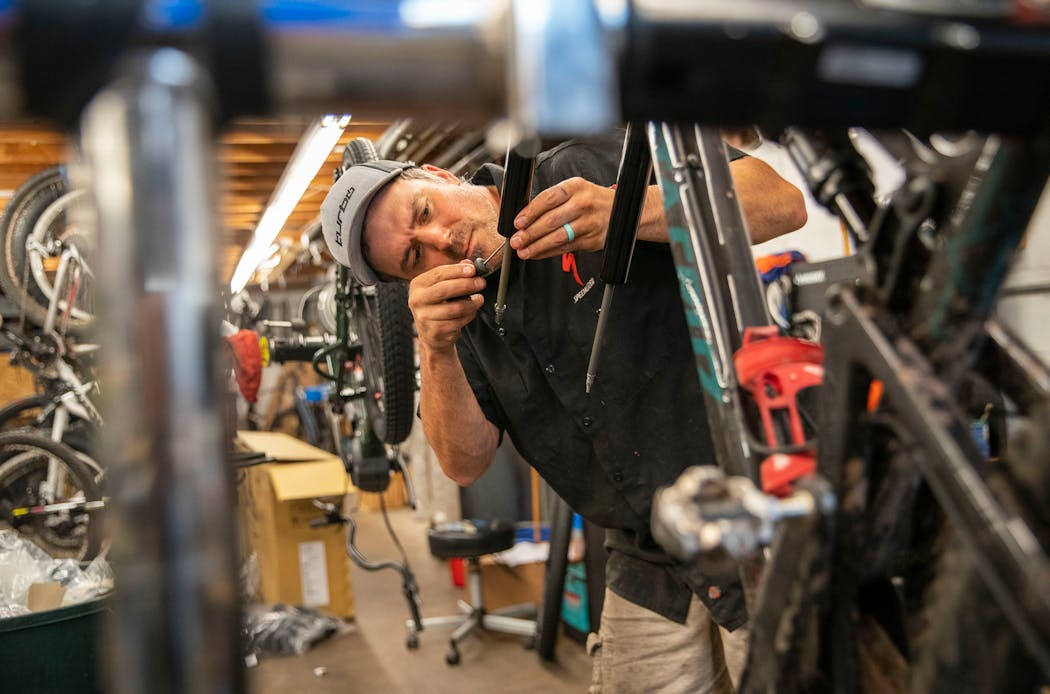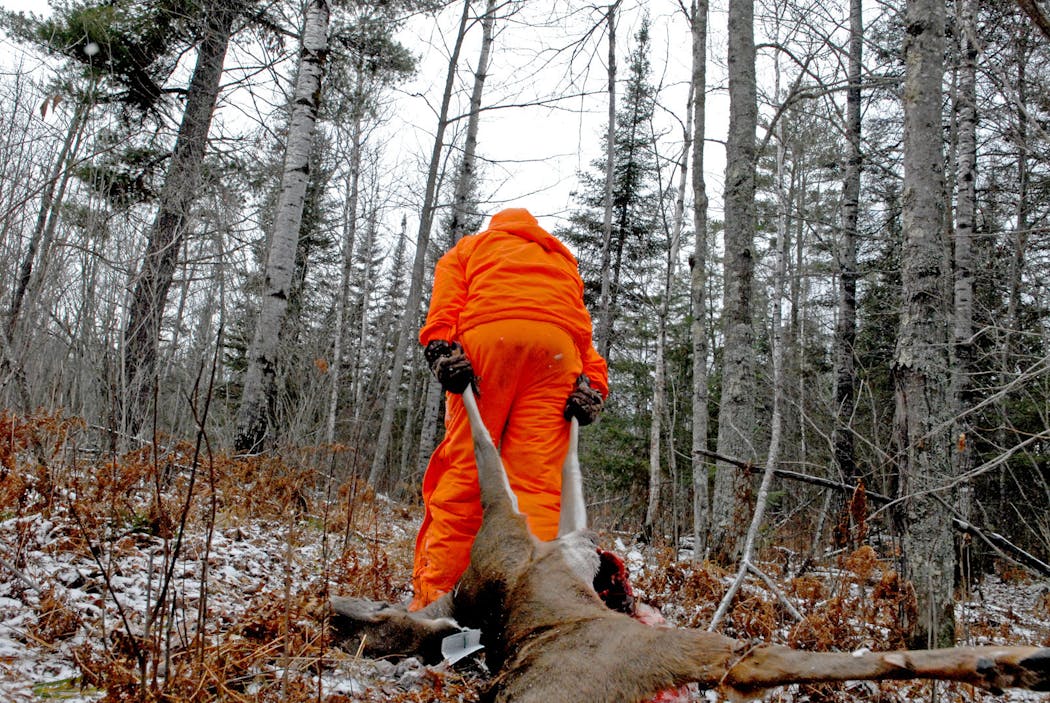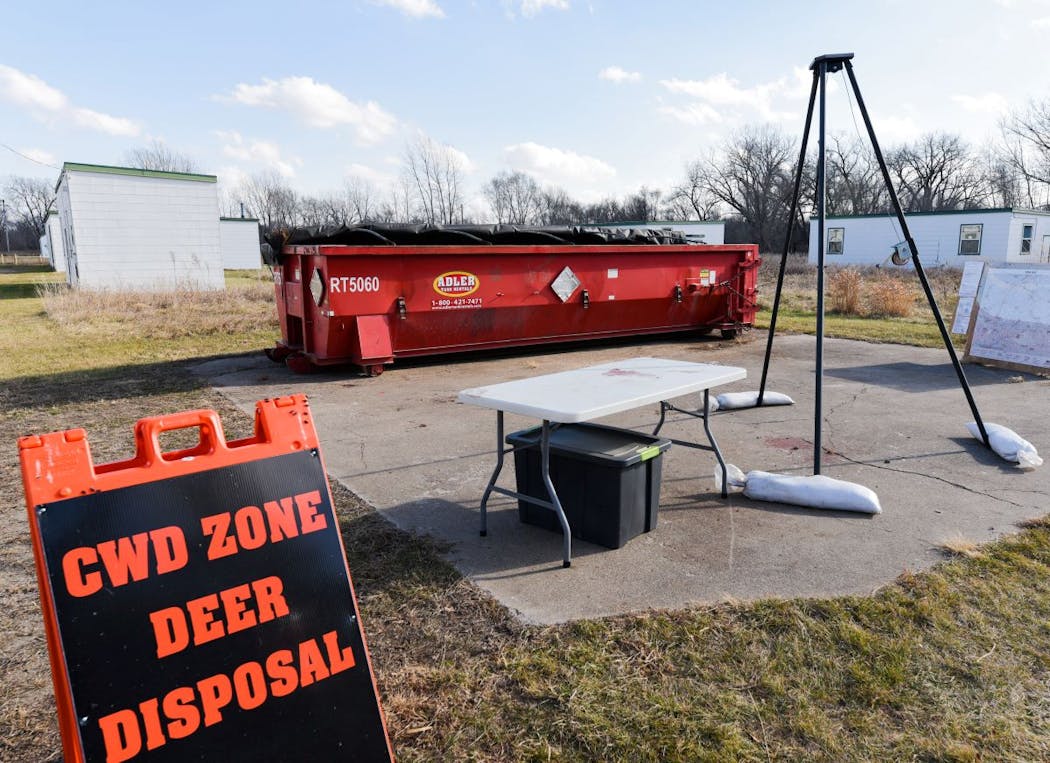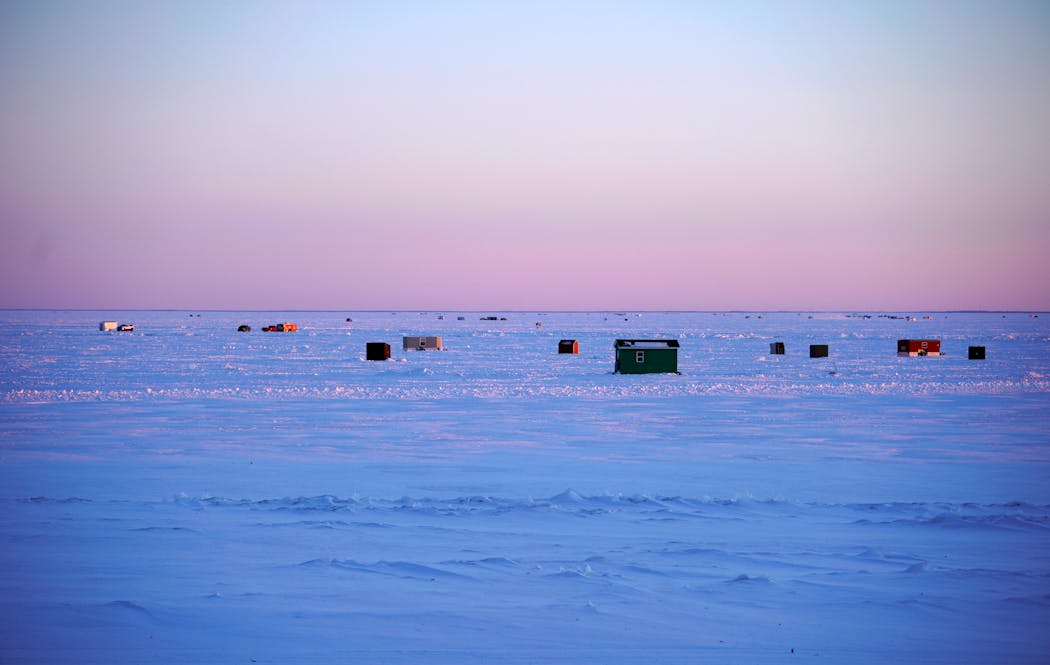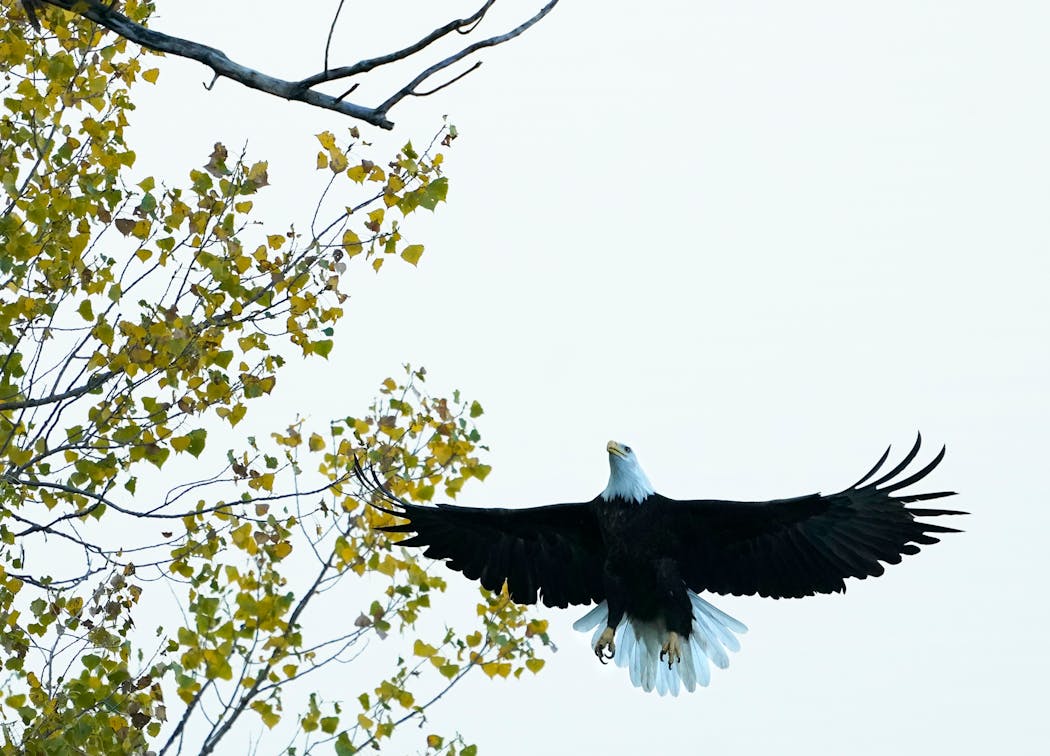Colorful anglers and adventurers. Vexing environmental threats. A coveted wilderness. A Minnesota tradition afield that even makes blaze orange in vogue for a time.
The glance below at some of the interesting people, sacred places and crucial issues of 2021 that comprise Minnesota's outdoors is a lot like life: light and dark, with gradations between. It is a snapshot of some of what we've reported in the Star Tribune in the past year — and are sure to follow and investigate and report back in 2022:
Up
A Minnesotan, from a walleye state, won a top professional fishing championship historically dominated by southern anglers. In July, Seth Feider of Elko New Market captured the prestigious Angler of the Year championship at the highest reaches of bass fishing: the Bassmaster Elite Series Tour. He was consistently solid all season, posting four top-10 finishes in eight tournaments. Feider will get to defend his crown soon. The new season begins Feb. 10 on the St. Johns River in Palatka, Fla.
Uneven
The threat of wildfires in the drought-stricken north closed the million-acre Boundary Waters Canoe Area Wilderness for the first time in 45 years. The Greenwood Fire in the Isabella area was a main factor. Forest Service rangers swept areas to evacuate canoe campers, while outfitters scrambled to cancel or modify customers' plans. The full closure was lifted in early September after a period of rainy, cooler weather and progress on fires. Now, a new threat to visiting is overcrowding and its impact on natural resources. The Forest Service announced this month it will reduce available permits at some entry points in the BWCA. The agency said it will specify which areas before reservations open for the upcoming season Jan. 26.
Up
Emily Ford of Duluth became only the second person and the first woman to thru-hike in winter the 1,200-mile Ice Age Trail in Wisconsin. Ford, with her sled dog, Diggins, completed the hike in early March after 69 days. Said Ford, reacting to her newfound celebrity and, as a Black woman, her inspiration to people of color: "I am so excited that something I love can be helpful in many circles. I think sometimes silent sports can be selfish. I am really pleased that this gets to be a community thing. That is really exciting for me."
Uneven
In mid-May, a team of adventurers led by KJ Millhone of Minnetonka and his daughter laid claim to being the fastest to paddle the entire 2,300 miles of the Mississippi River. They reached the Gulf of Mexico in 17 days and 20 hours. Coincidentally, a second Minnesota-led group was on Millhone's heels in its own Guinness World Record attempt. Alas, Scott Miller of Minneapolis and his three canoe-mates capsized with 140 miles to go, rescued by their support boat in 30-mph wind gusts and turbulent water. An accomplished long-distance paddler, Miller was philosophical after the harrowing end in the middle of the night: "The Mississippi said, 'All right, you guys, you're done.'"
Uneven
The COVID-19 pandemic continued to push people into the outdoors to seek peace and safety — and to buy toys to engage outside. Sales on everything from bicycles to motorized trail vehicles and RVs kept pace or exceeded 2020's pandemic-fueled demand. One RV industry report said 2021 shipments are expected to increase more than 33% over 2020's total. Telecommuting and remote work is a new wave also driving sales, according to a study reported on GoRving.com. Conversely, global supply challenges continue to hamper producers in need of parts and materials for popular RVs like wheeled ice houses or shipments of bicycles. Ben Doom, co-owner of Revolution Cycle and Ski in St. Cloud, said many bike orders showed up in late fall, a slow-selling time of year in the industry. "Estimated time of arrival for bikes is still far out," he said. "Depending on the model, if someone ordered a bike today we may not see it till 2023. Parts and accessories also continue to be hard to source." The same inventory issues are affecting ski sales, too.
Down
Minnesota deer license sales overall are stable to slightly lower from a year ago, but the deer harvest was 8.8% lower than 2020 as of Monday, according to the DNR report. The harvest stands at 181,384; it totaled 197,315 deer last year. The DNR tabulated 58,370 kills during this year's opening weekend, 11% below last year's opener. Dennis Anderson reported the dearth of whitetails taken in the northeast in some of the state's biggest Deer Permit Areas, owing to several factors, including habitat loss. Aggressive timber-cutting, for example, is affecting winter cover that's critical to deer survival.
Up
In November, Ron Schara, a longtime Minnesota outdoors storyteller and ambassador, broadcasted the 1,000th episode of his popular show "Minnesota Bound" on Ch. 11-KARE. The former Star Tribune columnist began the show in 1995.
Uneven
Chronic wasting disease (CWD), a fatal brain disease that remains a threat to Minnesota's wild deer herd, seemed to be in retreat in an affected region in the Brainerd lakes area —until news came early this month. The DNR reported CWD showed up in just one of 1,234 hunter-harvested deer, ending a three-year run of zero signs of the disease in tissue samples. The find also forced a reset for Deer Permit Area 604. DNR wildlife managers said they'll continue hunter-assisted disease surveillance through at least the autumn of 2024.
Down
The list of "impaired" Minnesota streams, lakes and rivers grew by 305 in a recent update, bringing the total to just more than 2,900 water bodies. The list by the Minnesota Pollution Control Agency includes waters that don't meet federal water quality standards. Common among the 6,000 impairments in state waters are, for example, high levels of mercury found in fish or excessive nutrients like phosphorus, which can spawn toxic algae blooms that are dangerous for people and pets. The news isn't all sober. From river-fed streams to lakes, more than 180 bodies were delisted for 2022.
Up
Talk about the ultimate recovery runs. Grandma's and Twin Cities marathons, canceled in 2020 for the first time in their histories spanning decades, returned in June and October, respectively, with reduced fields and strict health protocols. Grandma's organizers bused in runners in groups of 25 to the starting area after discussing best practices with crowd science experts.
Down
The state has warmed 3.0 degrees between 1895 and 2020, according to the DNR State Climatology office, but the real news is in the past several decades. Each of the top-10 combined warmest and wettest years occurred between 1998 and 2020. From the cycles and health of wildlife to recreational traditions and on, everything is touched. Winters are warming faster than summers in Minnesota. State officials recently said nearly two weeks of lake ice has been lost to climate change over the past 50 years.
Up
A report in April confirmed what many wildlife biologists and conservationists knew and bird lovers suspected: Bald eagles are thriving. The U.S. Fish and Wildlife Service (FWS) estimated the population at 316,700 birds and 71,000 occupied nests in the Lower 48 states — four times the number since the last estimate in 2009. Minnesota's role in the raptor's recovery from the ravages of pesticides and other threats is significant. In 2017, the DNR estimated there were about 10,000 nesting pairs in Minnesota. "We have a very, very healthy population," said Lori Naumann of the DNR's Nongame Wildlife Program.

Softball state tournament, live from North Mankato: Top two seeds in Class 4A advance
Twins starter Pablo López likely headed to injured list

RandBall: Ex-Wolves coach Tom Thibodeau, fired by Knicks, takes the fall again

Willi Castro homers twice as Twins rout A's 10-3





